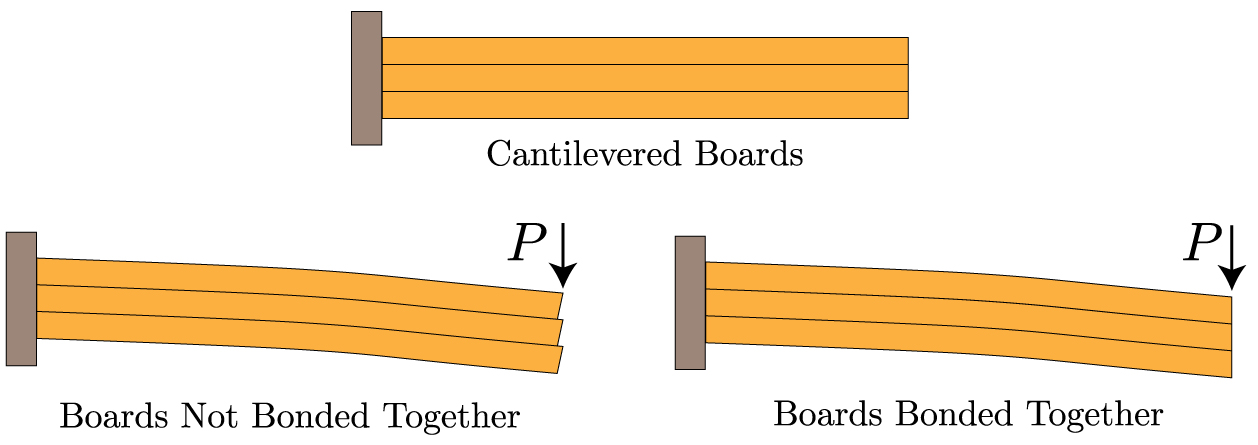

Strain e = ( δl / Original length) = ( PQ - P 1Q 1 ) / (PQ) The theory of bending is called theory of simple bending. This layer RS, which is neither compressed nor stretched, is known as neutral plane or neutral layer. The amount, by which a layer is compressed or stretched, depends upon the position of the layer with reference to RS. Now we see that the layers above RS have been compressed and that bellow have stretched. If we further proceed towards the lower layers are stretched the amount of extension increases as we proceed lower, until we come across the lowermost layer BD which has been stretched to B 1D 1. As we proceed towards the lower layer of the beam, we find that the layers have, no doubt, suffered compression, but to a lesser degree until we come across the layer RS, which has suffered no change in its length, through bent into R 1S 1. The top layer of the beam AC has suffered compression, and reduced to A 1C 1.

A little consideration will show, that all the layer of the beam, which were originally of the same length doing not remain of the same length any more. Since we are considering a small length of dx of the beam, therefore, the curvature of the beam, in this length, is taken to be circular. Due to the action of the bending moment, the beam as a whole will bend. Now consider two section AB and CD, which are normal to the axis of the beam RS.
#Mechanics of materials flexture examples free#

Therefore, pure bending occurs only in regions of a beam where the shear force is zero. Pure bending refers to flexure of a beam under a constant bending moment.


 0 kommentar(er)
0 kommentar(er)
